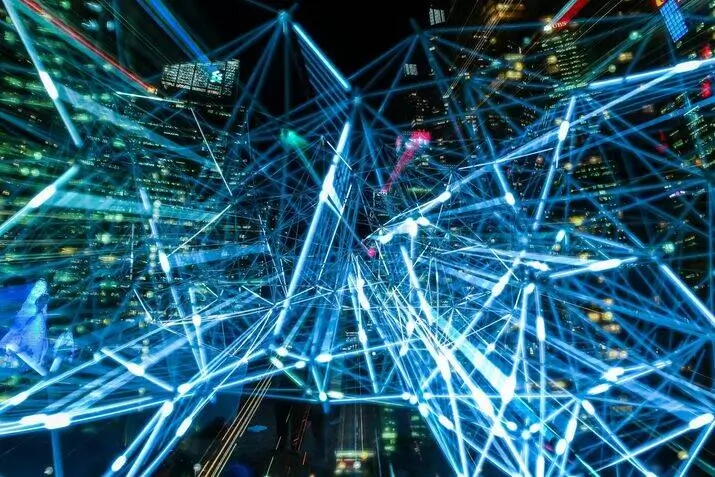
Cybersecurity is undergoing radical change due to the rapid development of artificial intelligence (AI). AI employs intelligent robots to carry out tasks like learning, problem-solving, and decision-making that generally require human intellect. In contrast, cybersecurity concentrates on safeguarding systems and data against attacks and unauthorized access.
AI has made tremendous progress in recent years, showcasing its potential in several fields, including cybersecurity.
This article examines the use of AI in cybersecurity, the difficulties, and the revolutionary possibilities of this potent partnership.
RELATED POSTS
- 10 PROVEN PRACTICES FOR MOBILE APPLICATION DEVELOPERS
- 7 BEST BENEFITS OF A WEBSITE FOR SMALL BUSINESSES
- 7 GAME-CHANGING UPDATES FOR FRONTEND DEVELOPERS
- MASTERING WCAG 2.1: A DEVELOPER’S GUIDE TO BUILDING ACCESSIBLE WEB EXPERIENCES
What Is Artificial Intelligence?
Artificial intelligence (AI) refers to the creation of computer systems that require human intelligence to perform operations such as learning, problem-solving, and decision-making.
Research into AI began in the 1950s and had significant applications in the 1960s, including the US Department of Defense’s attempts to create computers that could simulate human thought processes.
One crucial area of artificial intelligence is machine learning (ML). ML allows computers to recognize patterns automatically, anticipate outcomes, and gradually improve at particular jobs. Its main goal is to create algorithms that enable computers to learn from data without explicit programming.
What Is AI in Cybersecurity?
AI is revolutionizing cybersecurity by helping businesses protect their vital assets and defend against the constantly changing threat landscape.
AI-powered security solutions can analyze enormous volumes of data at high speeds, which allows them to:
- accurately recognize and categorize malicious activity, including ransomware, phishing attempts, and malware
- recognize new dangers and weaknesses to anticipate and stop cyberattacks
- automating security operations allows security teams to concentrate on strategic projects. Processes such as vulnerability scanning, incident response, and threat hunting can be automated.
Benefits of AI in Cybersecurity
Here are some benefits of AI in cybersecurity:
- Improved threat prevention and detection: AI is highly skilled at assessing large datasets to accurately detect and categorize cyber threats, including ransomware, phishing attempts, and malware.
- Quick reaction and mitigation: AI allows for automatic reaction to cyberattacks, significantly reducing the time between detection and mitigation. This prompt intervention reduces attacks on vital systems and data.
- Managing complex threats: Cyberattacks nowadays are frequently intricate and diverse. AI can offer a comprehensive picture of the danger landscape and facilitate the creation of all-encompassing security measures.
- Simplifying security operations: AI allows security experts to concentrate on strategic projects such as threat intelligence research and incident response planning by automating repetitive operations such as threat hunting, log analysis, and vulnerability scanning.
- Scalability and adaptability: AI systems easily grow with the amount of data and connected devices, providing strong security in a constantly changing digital environment.
- Continuous learning and improvement: By evaluating fresh data and using insights from previous events, AI systems can continuously learn and adapt, guaranteeing that security protocols remain effective in the face of threats.
- Decreased false positives: AI systems minimize disruptions to regular operations and lower the frequency of false positives by continuously improving their models and learning from past data.
- Stronger user authentication: AI strengthens user authentication, making it more difficult for unauthorized users to access systems.
- Adaptive defense: AI-driven security systems can adapt to the threat landscape, detecting new threats and modifying their defenses to remain effective.
The Use Of AI in Cybersecurity
1. Analysis and intelligence on threats
Contextual threat understanding is the process of connecting information from various sources to obtain a thorough grasp of the danger landscape, including threats’ characteristics, intentions, and possible consequences.
Machine learning algorithms can detect complex attacks like malware and phishing in real time, spotting minute patterns and anomalies that human analysts could overlook.
Pattern recognition is the process of using machine learning algorithms to find minute patterns and irregularities in data that can indicate criminal activities, such as malware attacks, phishing scams, and data breaches.

2. Advanced malware analysis and endpoint protection
AI is essential to malware analysis because it allows for the identification and categorization of known and unknown malware types. AI helps businesses stay ahead of the constantly changing threat landscape by identifying zero-day threats, evaluating behavioral patterns, and extracting important data.
AI systems are highly skilled at examining endpoint activity and spotting irregularities and questionable patterns that can signal a breach. By examining the traits and behavior of known malware strains, AI-powered systems can identify and eliminate emerging threats, including complex malware that uses obfuscation and encryption to avoid detection.
These features significantly improve endpoint security by offering real-time threat detection, facilitating proactive actions, and fortifying an organization’s security posture.
3. AI-powered password protection and authentication
AI is essential for improving user authentication and password security. Strong authentication procedures safeguard private user information and prevent illegal access in today’s digital environment.
AI-driven tools like fingerprint scanners, facial recognition software, and CAPTCHA improve authentication by automating attack detection and prevention, examining user activity, and spotting irregularities to improve the accuracy of authentication techniques.
Adaptive authentication techniques that modify security levels in response to user behavior and risk variables are examples of personalizing security. By utilizing AI to create more dependable and secure authentication systems, organizations can protect user accounts and reduce the risk of data breaches.

4. Behavioral analysis
Traditional cybersecurity defenses frequently use indicators of compromise (IOCs) and signatures to identify attacks. However, with the threat landscape changing so quickly and thousands of new threats appearing daily, this strategy becomes increasingly difficult.
Behavioral analytics provides a more proactive and successful method of threat identification.
Organizations can use AI and machine learning algorithms to:
- Examine and create baseline activity patterns for the network’s users, devices, and applications.
- Recognize any departures from typical behavior, such as odd network traffic, questionable file downloads, and odd login attempts.
- Use this information to look into unusual activities, spot weaknesses, and proactively hunt for threats.
5. Vulnerability management
Because traditional vulnerability management systems cannot keep up with this rapid evolution, enterprises find it challenging to address and mitigate new threats.
AI-powered solutions like User and Entity Behavior Analytics (UEBA) provide a notable benefit in this context. Through constant observation and analysis of user, device, and application behavior on the network, UEBA systems can:
- look for departures from typical patterns of activity, like odd attempts to log in, dubious file transfers, and unanticipated system modifications
- find and fix undiscovered vulnerabilities before attackers may take advantage of them
Challenges and Limitations of AI in Cybersecurity
Although AI has many benefits for cybersecurity, there are a few issues that need to be resolved:
- Cost and resource allocation: Integrating AI into cybersecurity plans requires a large cash investment and qualified staff.
- Adversarial attacks: Attacks can still affect AI systems. The efficacy of AI models can be compromised by malicious actors’ attempts to trick or alter them.
- Explainability and interpretability: It can be challenging to comprehend how complex AI models make decisions, making diagnosing and resolving problems difficult.
- Data bias: Inaccurate or unjust results can result from biases in the AI model’s output that are mirrored in the training data. When AI models are trained on data, they will inherit preexisting biases if the data reflects them. This could result in security decisions that unfairly target particular user groups or ignore dangers that harm particular demographics, among other discriminatory results.
- Overreliance and complacency: Relying too heavily on AI systems could result in complacency and a lack of attention to human knowledge, worsening vulnerabilities.
- Scalability and maintenance: It can be challenging to scale AI solutions to fit big, complicated networks, and it takes constant work to ensure AI models are updated and maintained
- Privacy and ethical issues: Significant privacy risks must be handled when gathering and analyzing large datasets for AI-powered security solutions. Data collection, use, and storage procedures must be carefully considered to comply with privacy laws such as the CCPA and GDPR.
- Skill gap: A lack of cybersecurity specialists with AI experience can hinder the efficient deployment and administration of AI-powered security solutions.
The Future of AI In Cybersecurity
The development of AI is closely tied to the future of cybersecurity.
- AI will continue to improve its capacity to examine enormous datasets and spot minute trends and irregularities that indicate new dangers. Organizations will be able to foresee and proactively resolve possible vulnerabilities.
- The emergence of advanced AI techniques, such as generative adversarial networks (GANs), will enable the development of more sophisticated defense mechanisms capable of anticipating and countering novel cyberattacks.
- Although AI has many benefits, human supervision is still essential. A trained cybersecurity workforce is necessary to implement, manage, and maintain AI-powered security solutions successfully.
- Google’s Project Zero, which will invest $10 billion over five years to find and fix serious vulnerabilities throughout the Internet, is a prime example of Google’s dedication to cybersecurity.
- Microsoft’s Cyber Signals program uses AI to evaluate an astounding 24 trillion security signals. It monitors threats from 40 nation-state groups and 140 hacker organizations, successfully preventing over 35.7 billion phishing assaults and 25.6 billion attempts at identity theft.

Conclusion
Even with various advances, human supervision and knowledge are still essential for the efficient use of AI in cybersecurity.
AI systems can sometimes produce false or deceptive findings and are vulnerable to hostile attacks. Therefore, they must be continuously monitored and assessed to identify and fix any potential biases, restrictions, or vulnerabilities.
Building strong and efficient cybersecurity defenses requires a cooperative strategy that leverages both AI’s capabilities and human intelligence.
With Charisol, you can embrace the AI revolution and fully understand its use in cybersecurity.

